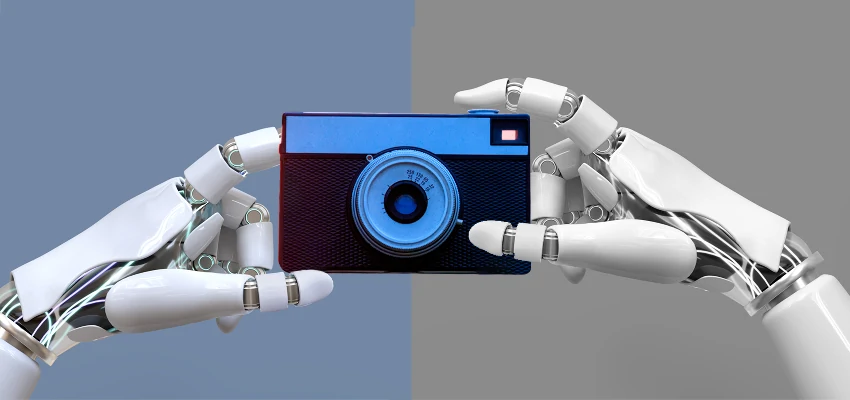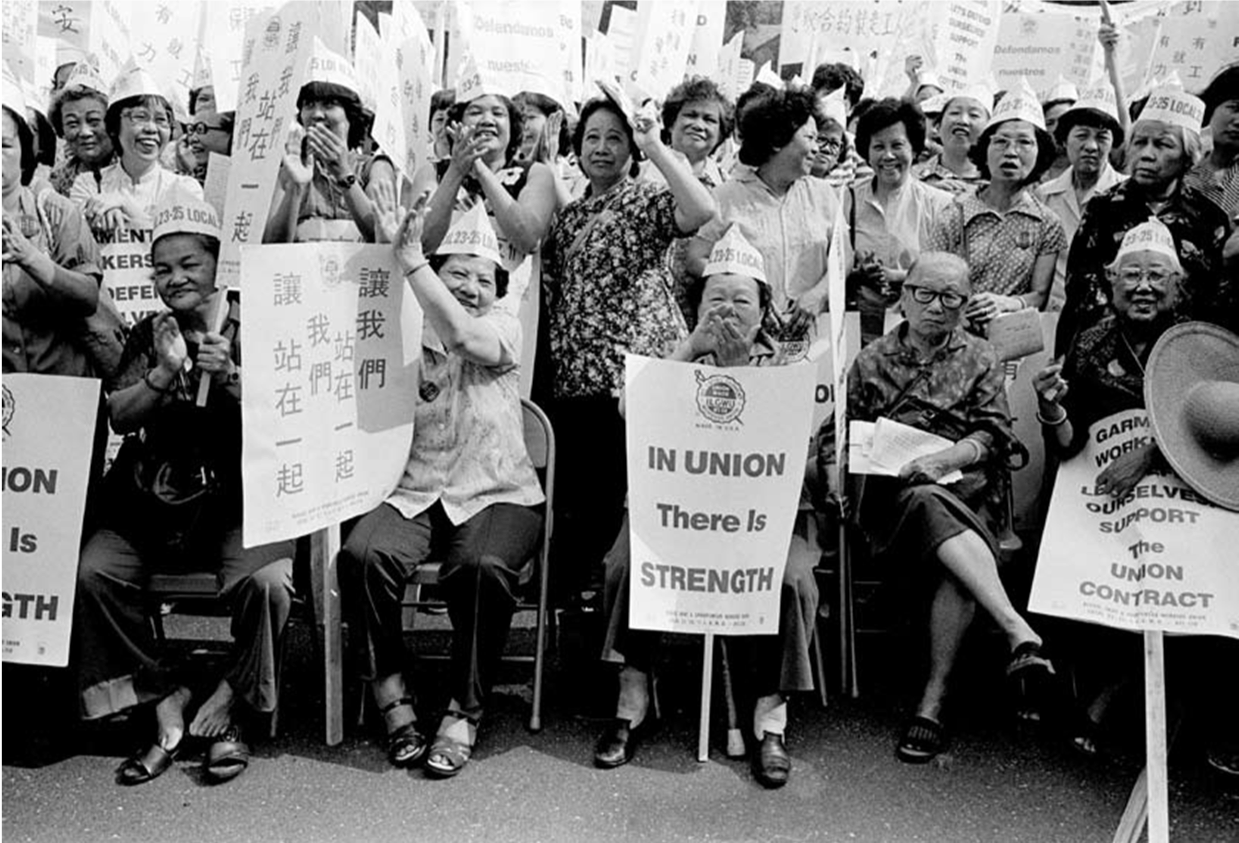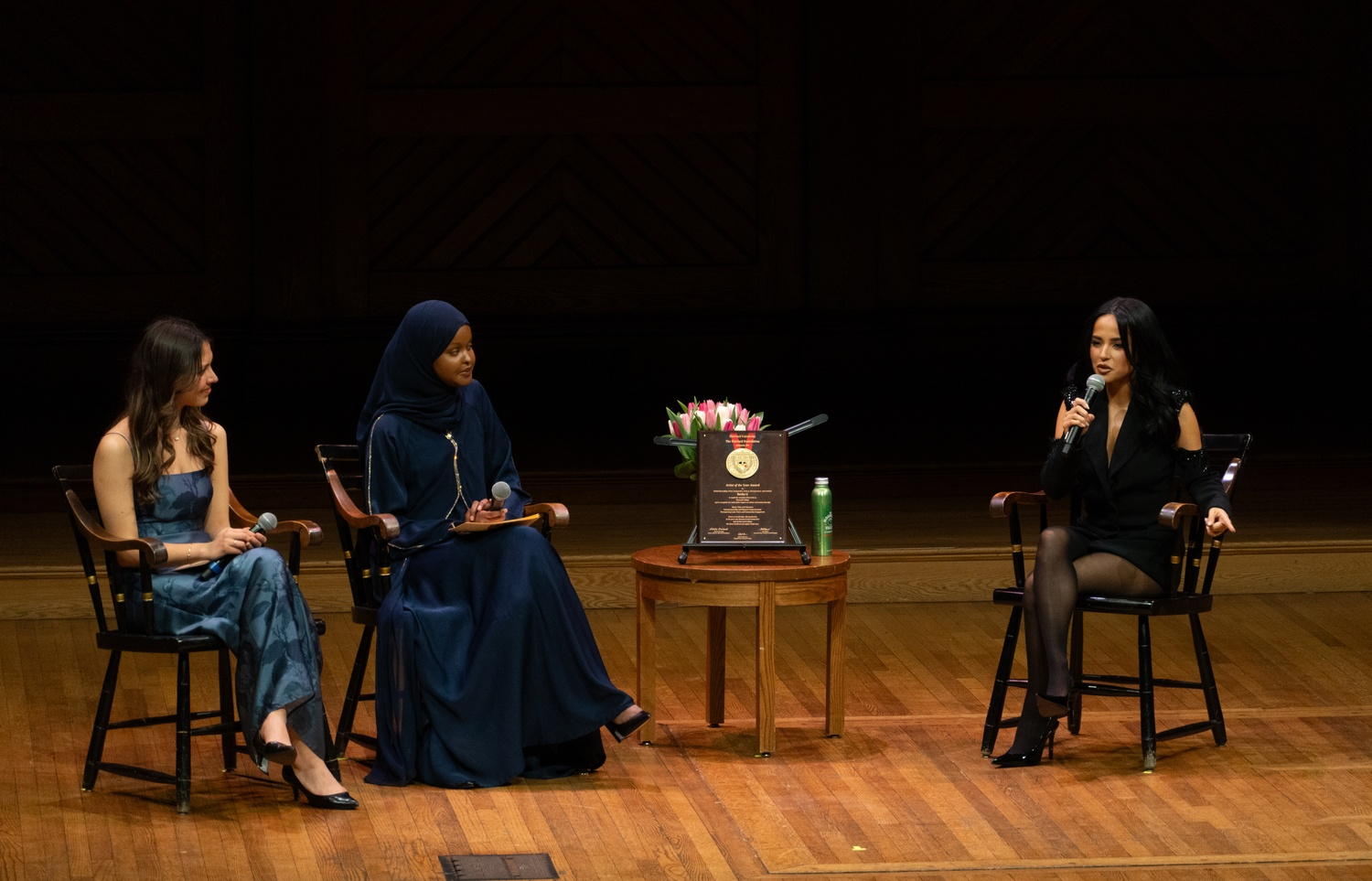
AI in Photojournalism: Can Technology Help Preserve Archives?
admin
- 0
AI in photojournalism is transforming the landscape of visual storytelling, offering both unprecedented opportunities and significant challenges. As the rise of artificial intelligence presents threats like copyright violations and the creation of synthetic images, it simultaneously opens doors for innovative solutions to preserve the integrity and legacy of photojournalism. Emmy award-winning visual storyteller Kira Pollack emphasizes that this technology could be pivotal in safeguarding photo archives that capture the essence of historical moments. In her research, she explores how AI can assist in cataloging these vital records, mitigating the risks posed by misrepresentation and ensuring we maintain a trustworthy visual narrative. As we delve into the impact of AI on photography, understanding how to leverage it ethically may determine the future of this critical art form.
The integration of machine learning and advanced algorithms into the world of visual media is a topic of increasing importance. This evolution in technology addresses significant hurdles faced by visual journalists, particularly regarding the preservation of historical imagery. Kira Pollack’s pioneering efforts seek to balance innovation with authenticity in the realm of documentation. By utilizing artificial intelligence tools, she aims to deepen our understanding of complex visual narratives while tackling the pressing issue of photojournalism challenges. The ongoing dialogue surrounding the future of photographic storytelling will inevitably shape how we interact with and perceive our visual heritage.
Understanding AI’s Impact on Photojournalism
The emergence of artificial intelligence is revolutionizing numerous fields, and photojournalism is no exception. As professional photographers grapple with the implications of AI technology, there is a growing concern regarding the erosion of trust and authenticity in images. AI’s capability to generate photorealistic images raises questions about copyright, integrity, and the representational accuracy of photographs. This duality presents both threats and opportunities for photojournalism, compelling practitioners to adapt to a rapidly changing landscape.
AI’s impact on photography extends beyond simply altering how images are created; it also influences how they are perceived and shared globally. In an age where misinformation is widespread, cultivating public trust in visual storytelling is essential. Kira Pollack underscores the importance of understanding AI’s multifaceted role in shaping contemporary photography. As technology evolves, photojournalists must find ways to harness AI’s potential while upholding journalistic ethics and ensuring the reliability of visual narratives.
Preserving Photo Archives through Technological Innovation
Kira Pollack’s research at the Shorenstein Center centers on utilizing AI to address significant challenges in preserving photo archives. Photojournalists have amassed countless images documenting pivotal moments in history, yet vast portions of these archives remain unseen and unutilized. By integrating AI technology, Pollack endeavors to catalog and organize these invaluable works, making them more accessible and impactful. The preservation of these archives is crucial to maintaining a visual record of our collective history—one that deserves to be shared and understood.
The challenge of preserving photo archives is not only about making images accessible but also about ensuring that the narratives behind them are preserved. Pollack believes that archives should be dynamic storytelling tools that reflect the intent and artistry of the photographers. Through AI technology, it may be possible to automatically generate context around these images, adding depth to the understanding of historical moments and the stories they tell. This innovative approach is a promising avenue for both protecting the legacy of photojournalism and enhancing public engagement with visual history.
Navigating Photojournalism Challenges in the Age of AI
The intersection of AI technology and photojournalism presents several challenges that professionals in the field must navigate. From concerns about the integrity of images to issues of copyright infringement, the risks are significant. Kira Pollack notes that the ability of generative AI to create images without original input blurs the line between real and artificial, challenging the very essence of photojournalism. As news consumers increasingly question the authenticity of images, maintaining trust becomes essential for the credibility of visual storytelling.
Additionally, the rapid proliferation of AI-generated content poses the risk of overshadowing genuine photojournalism. Pollack emphasizes that it is crucial for photojournalists to define the ethical boundaries of AI’s application in their work. By engaging in conversations about authorship, ownership, and the rights of photographers, the industry can better understand how to harness AI positively while minimizing its potential harms. Addressing these challenges will be vital for the future of photojournalism as the field evolves.
Kira Pollack’s Vision for the Future of Photojournalism
Kira Pollack’s work exemplifies a broader vision for the future of photojournalism that embraces technological advancements while adhering to the core values of truth and authenticity. Her research aims to demonstrate how AI can serve as a supportive tool in documenting and preserving photojournalism’s rich archives. By thoughtfully exploring how to integrate AI into the field, Pollack hopes to champion a narrative that prioritizes the intent of photographers and the integrity of their work.
Pollack envisions a future where AI empowers photographers, enhancing their ability to engage with audiences and share the stories behind their images. The potential of AI in photojournalism lies not just in its efficiency but also in its capacity to elevate the cultural significance of visual storytelling. By fostering dialogue with experts across disciplines, Pollack seeks to establish a collaborative approach to harnessing technology while promoting ethical standards within the industry.
The Ethical Dilemmas of AI in Photojournalism
As AI continues to shape the media landscape, ethical dilemmas regarding its use in photojournalism become increasingly prominent. Issues surrounding the exploitation of images for AI training pose significant concerns for photographers, particularly regarding consent and ownership. Pollack’s research delves into these challenges, highlighting the need for stringent guidelines to protect the rights and legacies of photographers amid rapid technological change.
Moreover, the ethical implications of AI-generated images cannot be overstated. The sensation of trust in visual narratives is at stake, necessitating transparency in how AI is utilized in photojournalism. By fostering discussions around ethical practices, Pollack advocates for a proactive approach that prioritizes the integrity of photographic work while addressing the changing dynamics of the industry. Ensuring ethical standards will be critical in navigating the complexities introduced by AI technology.
Exploring AI’s Contributions to Photojournalism Challenges
AI’s role in addressing the challenges faced by photojournalism is multifaceted. On one hand, the technology presents risks that threaten visual authenticity; on the other, it offers tools for deeper analysis and organization of existing archives. Pollack’s investigation into AI’s potential highlights its ability to analyze complex imagery and provide insights that human photographers may overlook. This capability paves the way for more informed storytelling that can enrich the public’s understanding of historical events.
As photojournalists confront the reality of a digital landscape overflowing with misinformation, AI can serve as a valuable ally in verifying facts and context. By integrating AI into their workflows, journalists can improve their ability to distinguish authentic images from manipulated ones. Pollack emphasizes the importance of adapting to these tools to enhance truth-telling in journalism, ensuring that photojournalism continues to reflect the realities of our world while innovating in response to emerging technologies.
AI in Photojournalism: Opportunities and Threats
The introduction of AI in photojournalism represents a dual-edged sword, presenting both opportunities and threats to the industry. While AI can enhance creative processes and streamline workflows, it also risks diluting the authenticity of photojournalistic practice. Pollack’s exploration of AI’s implications emphasizes the importance of maintaining a delicate balance between leveraging technology and preserving the trust that the public places in photojournalism. With the potential to create hyper-realistic images, the industry must proactively engage in discussions around the ethical use of AI.
Moreover, the challenges presented by AI include concerns about copyright infringement and the reuse of images without proper authorization. The need for a framework that protects photographers’ rights while allowing for innovation is paramount. Pollack advocates for a comprehensive understanding of AI’s capabilities and limitations, encouraging photojournalists to be both innovative and responsible in their adoption of new tools. By addressing these challenges through collaboration and ethical considerations, photojournalism can emerge stronger in the face of technological disruption.
Addressing Cultural Narratives with AI Technology
Cultural narratives play a crucial role in shaping our understanding of history, and AI technology offers exciting possibilities for elevating these narratives through photojournalism. Pollack’s research focuses on how AI can bridge the gap between historical archives and contemporary audiences, enabling storytellers to present visual histories more dynamically and engagingly. By utilizing AI’s capabilities, photojournalists can provide richer context and background about the images and stories they share, making these narratives more accessible to the public.
Utilizing AI to enhance cultural narratives not only supports the preservation of visual heritage but also reinforces the significance of diverse perspectives within photojournalism. Pollack envisions a collaborative approach with technologists and archivists to ensure that the tools developed prioritize inclusivity and representation. As the future of photojournalism unfolds, embracing AI can help narrate the complexities of our cultures and histories, offering profound insights into the human experience.
The Future of Photojournalism Amidst Technological Change
The future of photojournalism is poised for transformation as it grapples with the challenges and opportunities presented by technological advancements like AI. As the landscape evolves, maintaining the core values of journalism—truth, accuracy, and integrity—will be essential. Pollack’s work seeks not only to navigate the current technological challenges but also to envision a future where photojournalists can thrive alongside innovation.
Ultimately, Pollack advocates for a balanced approach to the integration of AI that honors the artistry and authenticity of photojournalism. By leveraging AI responsibly, the industry can address pressing challenges and enhance the value of photojournalistic work. As we move forward, fostering conversations among journalists, technologists, and policymakers will be crucial in shaping a future that preserves the integrity of visual storytelling while embracing the potential of new technologies.
Frequently Asked Questions
What is the impact of AI on photography in photojournalism?
AI’s impact on photojournalism encompasses both risks and opportunities. On one hand, AI-generated images can blur the line between reality and fabrication, challenging trust in visual journalism. Conversely, AI can help photojournalists organize and preserve vast archives of work, improving access to historical records. It serves as a tool to enhance understanding of complex images, ultimately supporting the industry’s goal of maintaining truth and authenticity.
How can AI help preserve photo archives in photojournalism?
AI has the potential to transform the preservation of photo archives by automating categorization, contextualization, and organization of images. By leveraging AI technologies, photojournalists can safely catalog their extensive collections, making them more discoverable and easier to analyze. This ensures that vital visual histories are not lost, especially as traditional archival methods become increasingly inadequate.
What are the challenges facing photojournalism today due to AI?
One significant challenge facing photojournalism is the erosion of trust caused by AI’s ability to create photorealistic images without using traditional methods. Additionally, concerns about copyright infringements and unauthorized usage of photographers’ work for AI training pose threats to the integrity of the industry. Addressing these challenges requires thoughtful engagement with AI technologies to reinforce the standards of truth and authorship.
What role does Kira Pollack play in AI research related to photojournalism?
Kira Pollack serves as the Walter Shorenstein Media & Democracy Fellow at the Shorenstein Center, where she investigates how AI can be harnessed to protect the visual archives of photojournalists. With her extensive background in visual storytelling at major publications, she aims to explore whether AI can enhance the preservation and accessibility of important photojournalistic works while upholding ethical standards.
How does Kira Pollack approach the future of photojournalism amidst AI innovations?
Kira Pollack approaches the future of photojournalism by advocating for the responsible use of AI technologies to address critical issues like archive preservation and public trust. Her research focuses on leveraging AI to enhance the narrative potential of photo archives while maintaining a firm commitment to the core values of photojournalism, such as truth, context, and the rightful attribution of authorship.
Can AI improve trust in photojournalism despite the threats it poses?
Yes, AI can potentially improve trust in photojournalism by aiding in the preservation and authentication of visual content. By facilitating the proper cataloging and contextualization of real images, AI can help reinforce the authenticity of photojournalism. However, it is crucial that these technologies are used ethically and transparently to prevent further erosion of public trust.
| Key Point | Details |
|---|---|
| Threats of AI to Photojournalism | AI technology poses risks like copyright violations and the creation of synthetic images that undermine public trust in photography. |
| Kira Pollack’s Role | As a Shorenstein Fellow, Pollack researches how AI can help preserve photojournalism archives. |
| Importance of Archives | Archives represent a critical visual history, with most images remaining unpublished and at risk of being lost. |
| AI’s Potential Benefits | AI could effectively catalog and contextualize extensive photojournalistic work, helping to organize and preserve it. |
| Case Studies | Experiments with AI have shown it can accurately analyze complex images and provide detailed context. |
| Concerns About Trust and Ownership | AI’s ability to create photorealistic images raises concerns about the erosion of trust and copyright infringement. |
| Vision for the Future | Pollack aims to engage with multidisciplinary experts to shape the role of technology in preserving journalistic integrity. |
Summary
AI in photojournalism presents a complex landscape where technology threatens traditional practices but also holds the potential for preservation and innovation. Kira Pollack’s work is at the forefront of exploring these dual aspects, advocating for responsible use of AI to maintain the integrity and accessibility of photojournalistic archives. As the industry navigates the challenges posed by AI, it is crucial to harness its capabilities to make historical visual narratives more available while safeguarding public trust and authorship rights.

